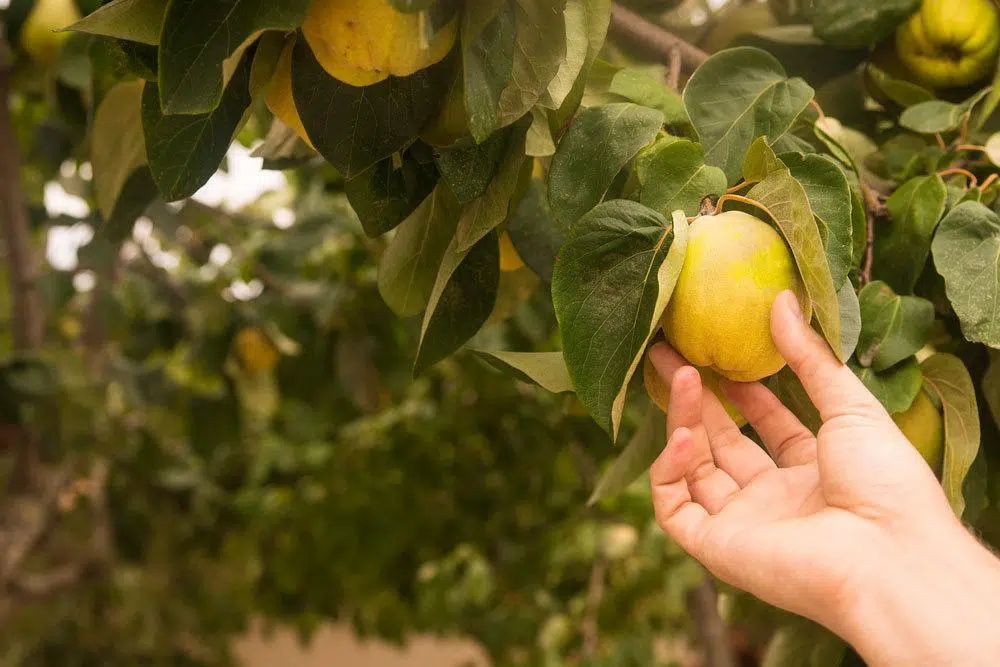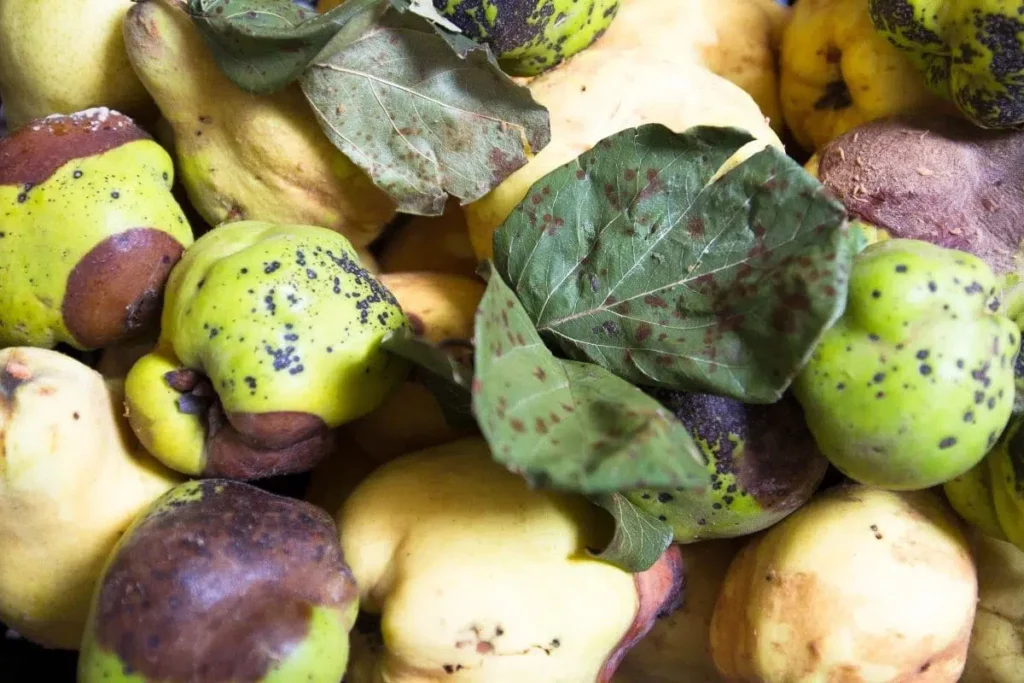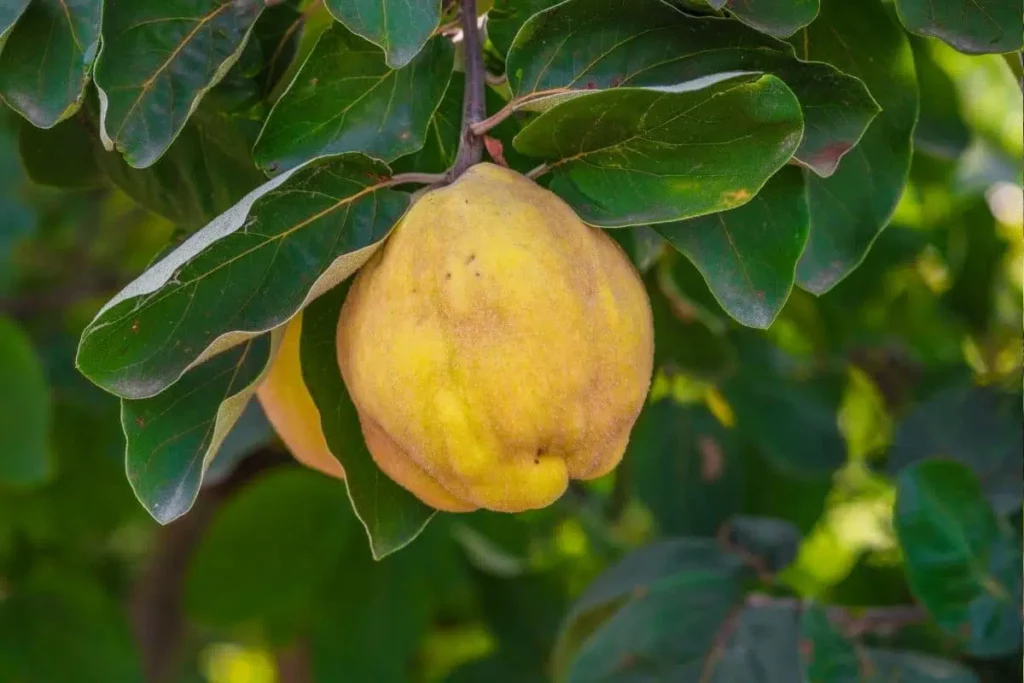If quinces are brown inside, the fruits are not rotten in every case. What causes can be responsible, how they can be identified and the measures for prevention we reveal here.
- brown flesh has several causes
- fruits are not rotten in every case
- over-ripening is possible
- Drought may be responsible
- Lack of nutrients is also a possible trigger
Contents
Overripe
A possible reason for quinces being brown inside is a high degree of ripeness. In this case, the fruits are not rotten in every case. Similar to apples, only the pectin, which is present in large quantities in the fruit flesh, discolors. The same effect can be observed if a cut quince is exposed to air for a long time.
The fruit should be harvested when:
- the fluff on the shell can be easily rubbed off
- they emit a pleasant fragrance
- they turn yellow
If the right time is missed and the fruits are still brown inside, the conditions of care should be checked.
Dryness
Brown discoloration occurs not only on the leaves when there is a lack of water. The fruits also suffer from it. Fruits discolored by dryness are edible without problems and can be processed as usual. However, this problem can be prevented by a few simple measures.
It is recommended to create a seepage pit around the tree disc already when planting the tree. For this, only the following steps are necessary:
A five to ten centimeter wide trench is dug. This should be at least ten centimeters deep.
The side walls can be compacted by tapping.
The trench is filled with stones, gravel or chippings. Sand is also an alternative.
When it rains, but also when the tree is watered, the water seeps into the soil faster and more effectively. The supply is improved and becomes easier. Thus, drought can be prevented. In phases without precipitation, watering is still necessary. Which water is best suited for this depends on the soil.
Tip: The seepage pit can also be installed later. It is only important that the pit is not dug too deep. Otherwise, the roots could be damaged.
Nutrient deficiency and pH value
A lack of calcium can cause the flesh of the fruit to turn brown. This occurs more frequently when the pH is too low for the quince tree. Attention must be paid to the following points:

- pH value between 5 and 6.5
- If the values are too low, use lime or hard tap water
- spread compost on the tree disc in spring
- carry out regular analyses of the soil
The brown spots are also known as “stippling”. They not only show up around the cores, but even appear directly under the husk.
Tip: If you don’t want to do the pH yourself, you can give a sample of the substrate to hardware stores or nurseries that offer the service. The costs for this are usually relatively low.
Cold
If quinces are not harvested in time, they may turn brown on the inside due to frost damage or already due to insufficient temperatures above freezing.
Therefore, the fruit should be harvested as soon as possible. Waiting for a higher degree of ripeness is not worthwhile with this fruit. Already a golden yellow color is enough as a sign to start harvesting. However, even after taking the quince should not be stored too cool. Even the temperatures in the refrigerator are too low. If the fruit still needs to be stored after harvest, a cool and dry place is recommended.
Tip: A box filled with sand to store harvested quince can be ideal to ensure longer freshness.
Rot
In addition to an undersupply of water and nutrients or cold, rot can also cause brown spots in the fruit. But how can this be detected? Paying attention to the following points will help:
- unpleasant odor reminiscent of vinegar
- a furry coating or mold
- flesh is soft and can be easily pressed in
- brown spots or bruises visible from the outside

Tip: Even fruit with slight rot in one spot can often be saved for processing by generously cutting away a large portion of the quince.
Are the fruits edible or not?
It is usually sufficient to check the odor. A rotten odor or an odor reminiscent of vinegar indicates that the fruit is rotten. If there is a brown discoloration and the quince still smells fruity and pleasant, it can also be processed.
Recognizing signs – how does it work?
If the fruit is brown on the inside, it can often be detected from the outside. The signs include
- yielding fruit flesh
- visible discoloration
- dark yellow coloration
Can quinces also be eaten raw?
Whether the fruit can be eaten raw depends on the variety. Therefore, care should be taken at the time of purchase as to how the respective variety is to be used.


